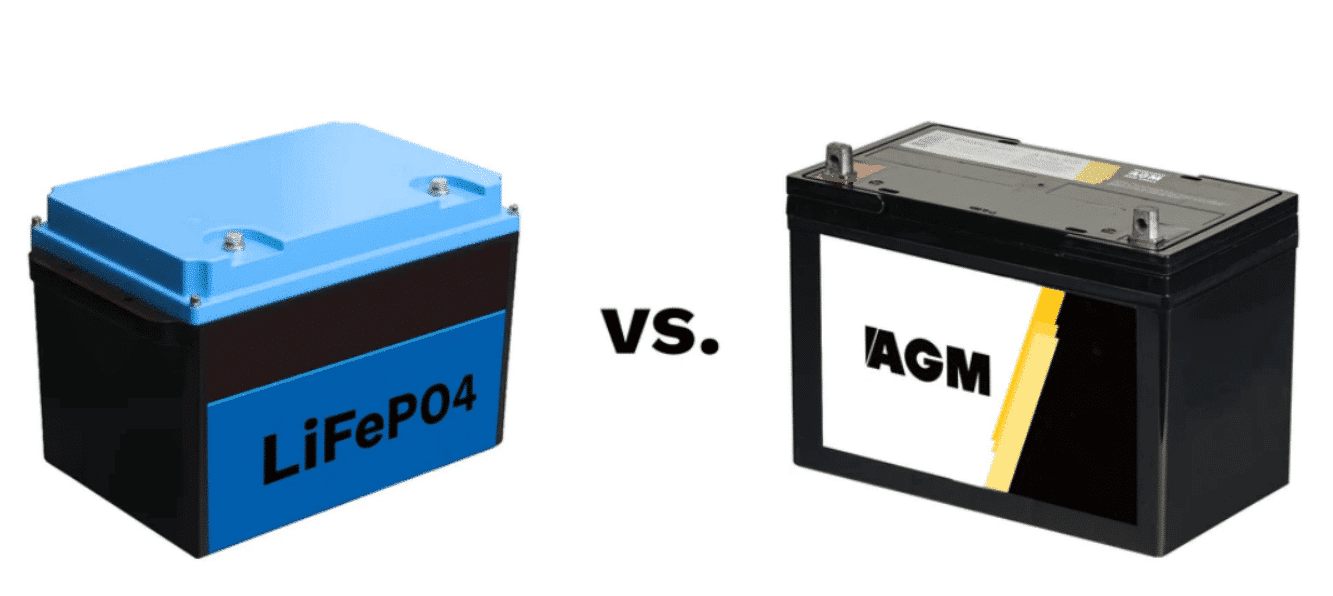Navigating the world of batteries can be a challenge, especially when faced with popular options like LiFePO4 and AGM. Both come with a unique set of benefits and downsides. In this guide, we’ll delve into the characteristics of each battery type to help you determine the best fit for your requirements. So, let’s embark on this electrifying exploration!

Unpacking the AGM Battery
AGM, or Absorbent Glass Mat batteries, are a subset of the lead-acid battery family. Their design incorporates a fiberglass mat to soak in the electrolyte solution, enhancing the contact surface area between the electrolyte and the internal plates. This results in a performance boost compared to conventional flooded batteries.
Key Takeaways of AGM Batteries:
- Pros: High current delivery on-demand, excellent for starting engines and electric vehicle applications, minimal maintenance, and leakage resistance.
- Cons: Typically costlier than other lead-acid batteries and may have a shorter lifespan if not maintained properly.
If high reliability and low maintenance in heavy-duty applications like boats and RVs sound appealing, AGM batteries could be your match.
Discovering the LiFePO4 Battery
LiFePO4, shorthand for lithium iron phosphate, has been creating waves in the battery world for its durability and superior energy density. A lithium-ion variant, LiFePO4 batteries, boasts enhanced safety and stability, sidestepping issues like overheating prevalent in traditional lithium-ion batteries.
Key Takeaways of LiFePO4 Batteries:
- Pros: Extended lifespan (up to 10 years with proper maintenance), high charge/discharge efficiency, superior performance in extreme temperatures, and apt for outdoor applications like solar systems.
- Cons: Initial cost can be higher than AGM batteries, and they necessitate specialized chargers.
If you’re scouting for an advanced, long-lasting battery for high-capacity devices or environmentally-friendly purposes, LiFePO4 may be your go-to choice.
LiFePO4 vs AGM: Making the Choice
To make an educated choice between AGM and LiFePO4 batteries, evaluate your intended use. For budget-conscious consumers requiring reliable power for smaller devices, AGM offers an affordable solution. Conversely, if your focus is on high-capacity devices, LiFePO4, despite its initial cost, promises long-term benefits.
Moreover, eco-conscious users might lean towards lithium phosphate-based batteries for their recyclability, curtailing electronic waste.
Ultimately, your decision hinges on your specific needs, priorities, and the value you place on each battery’s strengths.
In Conclusion
Both AGM and LiFePO4 batteries have carved their niches, serving different needs effectively. While AGM is a cost-effective, low-maintenance option, LiFePO4 shines in performance and lifespan. Your choice should reflect your energy needs, budgetary constraints, and long-term expectations. By understanding these batteries’ intricacies, you’re better poised to make a sound investment in your power storage solutions.




